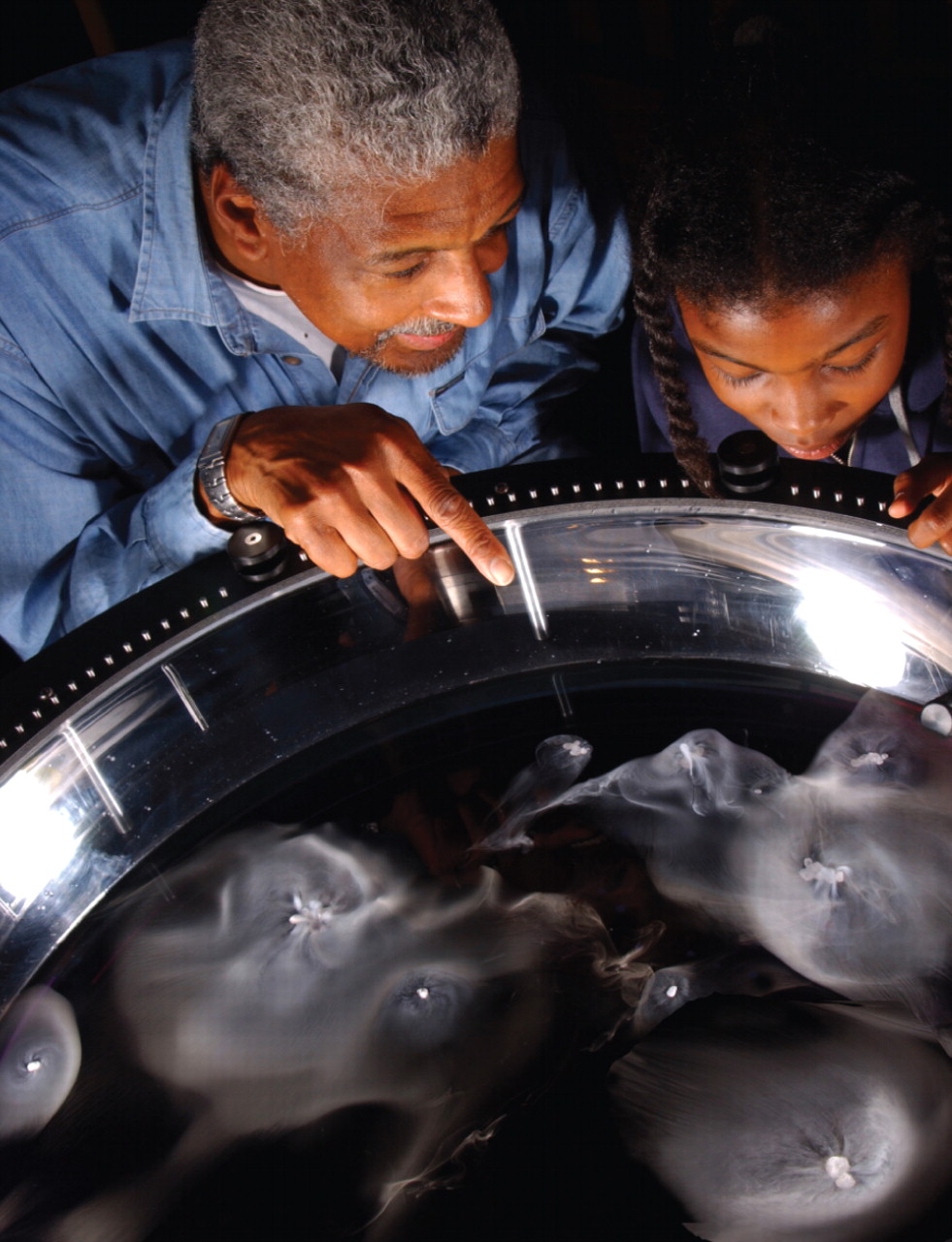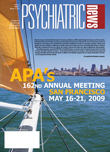San Francisco has lots of places to keep the kids happy while mom or dad are in town for APA's annual meeting in May.
The Exploratorium in the Marina District bills itself as the“ original hands-on science museum.” Four of the standing exhibits make science even more fun than it is for the average post-doc.
A good start for the children of psychiatrists is “Mind,” an exhibit illuminating the science, art, and experience of emotions and their expression.
“Listen: Making Sense of Sound” explores the perception of sound by exploring the “sonic soup” of human speech, natural noises, machinery, cars, music, and more.
Do we see things as they are or do we see things as we are? More than 70“ Seeing” exhibits focus on how we interpret the world through our own subjectivity.
“Traits of Life” opens up to children basic questions about living things: What are the essential elements of life? How do scientists distinguish between living and nonliving things?
Once the gene for biology is switched on, children and adults can visit the“ Microscope Imaging Station” at the Exploratorium to explore a world visible only to the well-aided eye.
Visitors can control the microscopes to view living specimens. They can choose from among several different specimens, pan the microscope over them, change magnification and focus, and even change the lighting to illuminate the specimen or use reflected light and fluorescence to dramatically change how they look.
The Koret Children's Quarter (known simply as the Children's Playground until recent renovations) in Golden Gate Park dates from 1887, when providing a space solely for youth recreation was a groundbreaking innovation. San Franciscans call it the nation's first public playground. The design reflects the transition of San Francisco's natural landscape descending from hills to shore to sea. Children can climb wave walls, explore sea caves, clamber over seaside animal sculptures, slide down a hillside, and ignore their parents in a tree-house village.
San Francisco's Aquarium of the Bay offers an insight into that watery environment without having to get wet.
Visitors begin with an introduction to the ecosystems that support marine life in San Francisco Bay, then view displays of more than a thousand aquatic animals that live there. A moving walkway takes guests through two clear tunnels, 300 feet long, surrounded by 700,000 gallons of filtered bay water and more than 20,000 bay-dwelling creatures. Other tunnels reveal the near-shore habitat with giant schools of anchovies and colorful sea stars and deeper-water creatures like bat rays, rare angel sharks, and unusual eight-foot-long, seven-gill sharks.
The final exhibit recreates the California coast. Visitors encounter a series of pools where they can touch live bat rays, leopard sharks, and tide-pool marine life.
A “Behind the Scenes” tour of the aquarium costs an additional $6.
Next door to the Aquarium on Pier 39 is the San Francisco Carousel. Handcrafted in Italy, it is intricately hand painted and depicts famous San Francisco landmarks, including the Golden Gate Bridge, Coit Tower, Chinatown, Lombard Street, Alcatraz, and the popular California sea lions who hang around at the end of Pier 39. Kids can ride on one of 32 animals, including sea dragons, sea lions, dolphins, panda bears, and, of course, horses. Throughout the ride, patrons hear traditional organ music and watch the passing scene on Pier 39's bustling promenade.
Zeum, right across from the Moscone Center, is a nonprofit multimedia arts and technology museum that fosters creativity and innovation in young people. Zeum provides hands-on experiences in animation, sound and video production, live performance, and visual arts. Visitors combine their imaginations with arts and technology tools to create a clay animation, make music videos, compose a soundtrack, or experiment with digital art.
The San Francisco Cable Car Barn, Powerhouse, and Museum on Nob Hill gives visitors a peek into the history and workings of the city's preeminent symbol. Three antique cable cars are on display, including the very first, placed into service in 1873. Visitors can view the cable-winding machinery that operates the system, as well as the path of the cable entering the building and leaving underneath the street in the sheave room.
The best way to get to the powerhouse is (how else?) by cable car.
At the Randall Museum near the city's center, children and adults can explore the creative aspects of art and discover more about nature and the environment. A new exhibition, “Wild in the City,” features wildlife—including coyotes, raccoons, and skunks—with whom humans share the urban environment. The museum also has a permanent exhibit about earthquakes, San Francisco's emblematic municipal event.
Ready for the big one? A seismograph in the exhibit is connected to a seismometer in the basement that registers earthquakes around the world in real time. Visitors can observe and learn about plate tectonics while playing with the museum's hands-on replica of the Hayward Fault.
The earthquake exhibit also includes a full-sized replica of an earthquake refugee shack, the kind that sheltered San Franciscans while the city was rebuilt after the great San Francisco earthquake and fire of 1906 destroyed more than half of the city's homes.
Across the bay in Oakland lies the Museum of Children's Art, which, contrary to rumor, is not lined with refrigerator doors. The museum offers the Drop-In Art program, where professional teaching artists help children aged 18 months and older express themselves using paint, papier-mâché, clay, fabrics, feathers, and all kinds of unusual materials.
Of course, a no-fail choice with children is the zoo. The San Francisco Zoo is located next to the Pacific Ocean. The zoo is home to 250 species of exotic and endangered wildlife, ranging from insects to giraffes. Five botanical exhibits round out the collection. Last December the zoo added a baby gorilla to its extended family. Psychiatrists may find it interesting to learn that the first-time mother gorilla kept clear of her son following the birth (perhaps because she hadn't read John Bowlby on attachment), so the zoo enlisted another gorilla to fill in as a surrogate.
MORE INFORMATION
Exploratorium, Palace of Fine Arts
3601 Lyon Street, (415) 561-0360, www.exploratorium.edu
Koret Children's Quarter
320 Bowling Green Drive, (415) 831-2700, www.sfgov.org/site/recpark_page.asp?id=26880
Aquarium of the Bay
Next to Pier 39 at the Embarcadero and Beach Street, Fisherman's Wharf, (888) SEA-DIVE; (415) 623-5300, www.aquariumofthebay.com
Zeum
221 Fourth Street, (415) 820-3320, www.zeum.org
San Francisco Cable Car Barn, Powerhouse, and Museum
1201 Mason Street, (415) 401-3119, www.sfcablecar.com, www.cablecarmuseum.org
Randall Museum
199 Museum Way (near the intersection of Castro and States Streets), (415) 554-9600, www.randallmuseum.org
San Francisco Zoo
1 Zoo Road, (415) 753-7080, www.sfzoo.org▪

